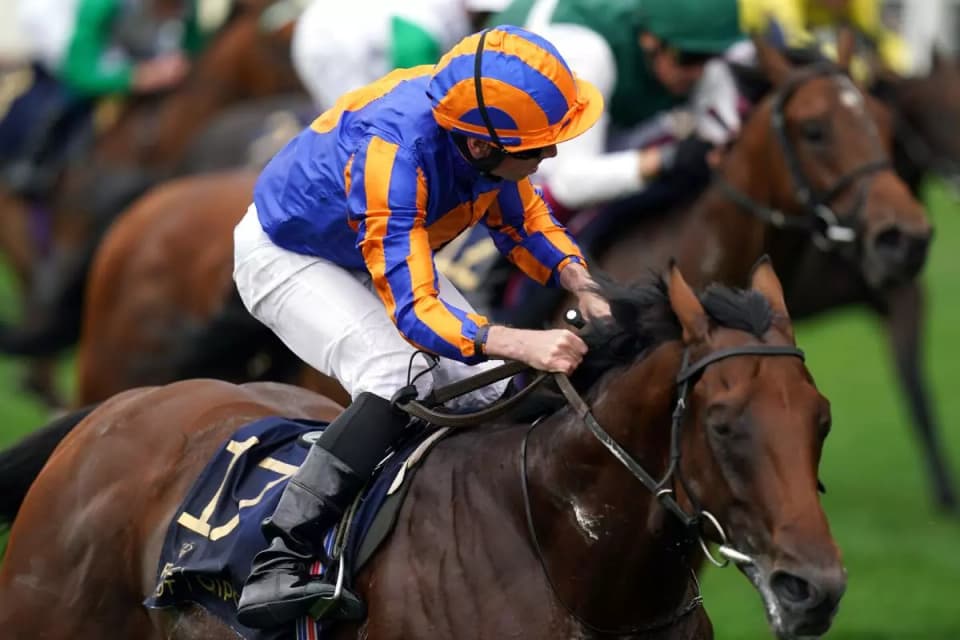About Royal Ascot

About Royal Ascot
One of Britain's most famous racecourses, Ascot, holds a special week of racing in June every year - Royal Ascot. Welcoming around 300,000 visitors over five days, Royal Ascot is one of Britain's most prestigious race meetings, and a major betting event. Attracting some of the world's finest horses, it's globally recognised as the pinnacle of Flat horse racing season.
Prestigious races such as the Gold Cup and the Queen Elizabeth II Jubilee Stakes not only test the abilities of the horses but also the world’s top jockeys. Royal Ascot is as much a social event as it is a sporting one, exemplified by the Royal Enclosure, an exclusive area introduced by King George V and Queen Mary in 1911 which epitomises Royal Ascot's unique blend of tradition, pageantry, and fashion. The Royal Procession, in which the British monarch and their entourage arrive at the racecourse each day in horse-drawn carriages, has become an iconic symbol of Royal Ascot, drawing attention from spectators and media across the world.
While the glamour and tradition of Royal Ascot are major attractions, for most spectators the thrill of the event lies in the races themselves. The allure of predicting the races’ outcome, from the winner to the placed-horses, has a rich history rooted in the very heart of this prestigious meeting. Horse racing odds are not just numbers; they tell a story of the competition, capturing the ebb and flow of fortunes on the racecourse. Betting has always been an integral part of horse racing, including Royal Ascot.
In the 18th and 19th centuries, gambling took place mainly among the elite in the form of private wagers. Over time the sport became more accessible and the general public began to engage in betting too. Nowadays, placing a bet at Royal Ascot is easier than ever, thanks to a wealth of online bookmakers and guides that help newcomers navigate the world of horse racing gambling. These resources provide Royal Ascot tips, predictions and detailed analysis of horses, jockeys, and trainers, as well as strategies to maximise winning potential.
Moreover, tipsters – individuals who offer advice or predictions about the outcome of sporting events – play a significant role during Royal Ascot. From free tips offered in newspapers and online, to professional tipsters who provide paid advice, there's a wealth of information to help inform betting decisions, adding another layer of excitement to the Royal Ascot experience.
History of Royal Ascot
1711
Queen Anne started racing at Ascot in 1711, introducing Her Majesty’s Plate for any horses over the age of six. Seven horses ran in the first race on 11th August, 1711.

1768
The first four-day race meeting at Ascot, which also included other entertainment at the course such as prize-fighting, singers and jugglers.

1807
One of Royal Ascot’s most prestigious races, the Gold Cup, was introduced. Traditionally run on the third day of Royal Ascot, also known as Ladies’ Day, the Gold Cup is the oldest surviving race at the event. It’s a race over two miles and three furlongs for horses over four years and older.
1822
King George IV commissioned the Royal Enclosure, which is still used today and requires entry by invitation only.
1825
The inaugural Royal Procession was introduced in 1825, and still takes place at 2pm on each of the five days of Royal Ascot.

1957
Champion jockey Lester Piggott rides the first of his record-breaking eleven Gold Cup winners on Zarathustra in 1957, when he was 22 years old.

2009
Aidan O’Brien’s Yeats wins a record-breaking fourth consecutive Gold Cup. A statue of Yeats was unveiled in the parade ring in 2011.

2013
Estimate wins the Gold Cup, becoming the first horse owned by a reigning monarch to win the famous race.

2023
Royal Ascot continues its time-honored tradition, maintaining its prestigious reputation and drawing an international audience of dedicated fans and bettors alike.



